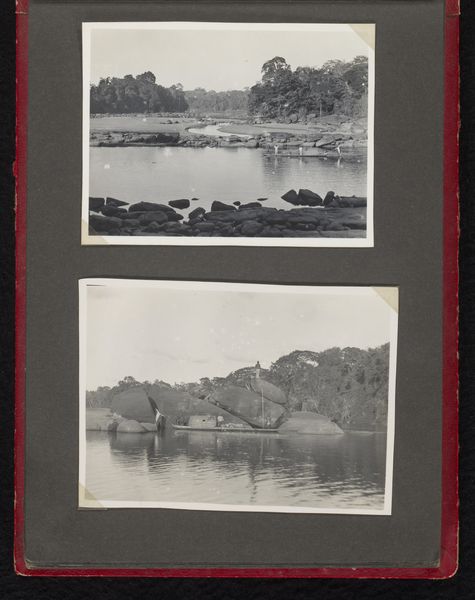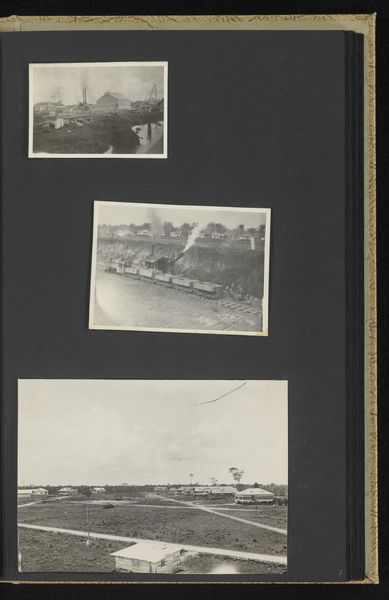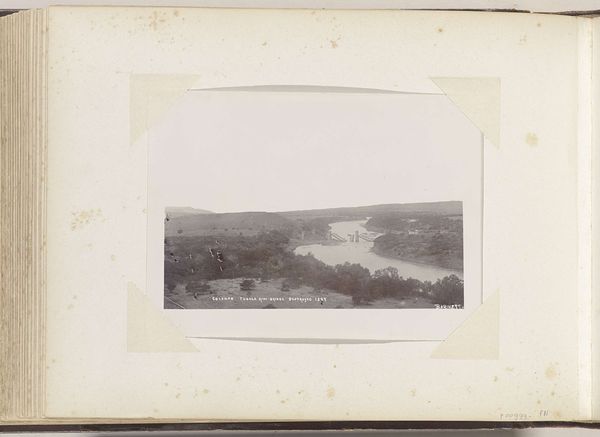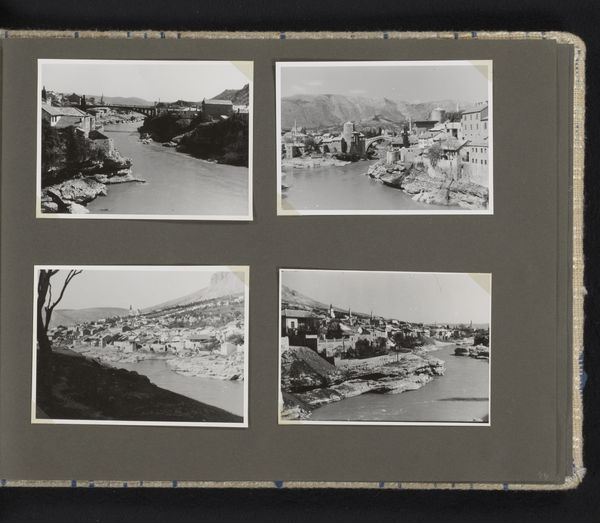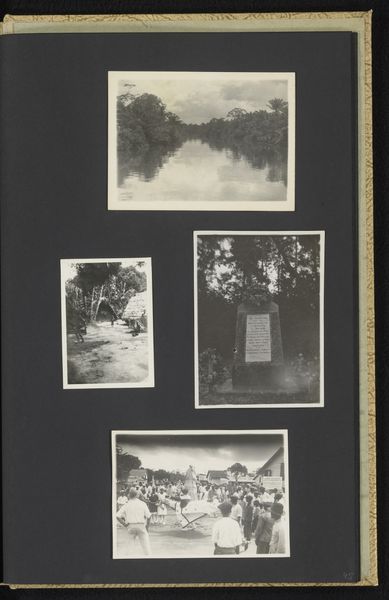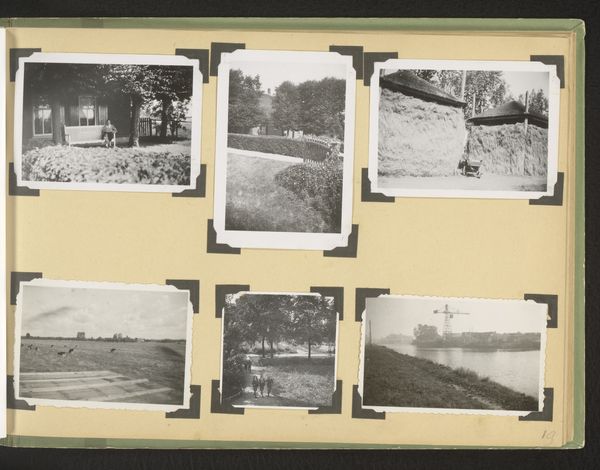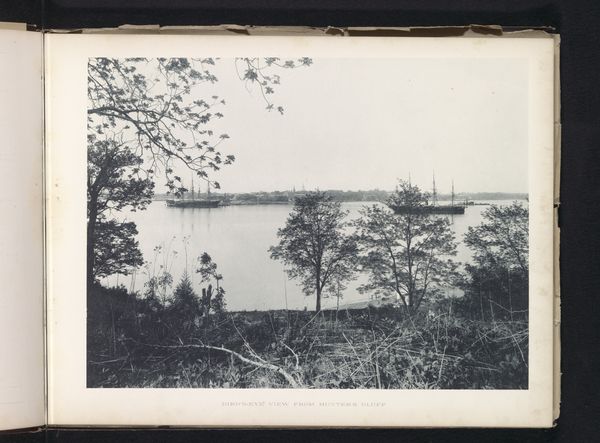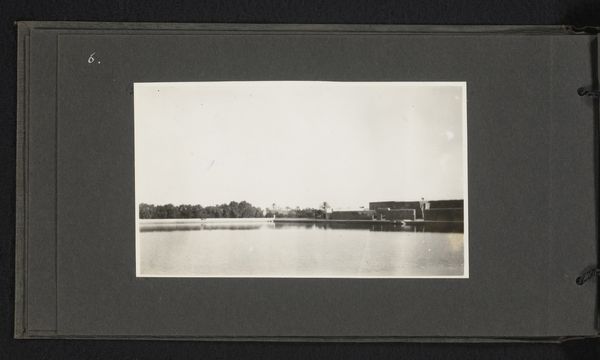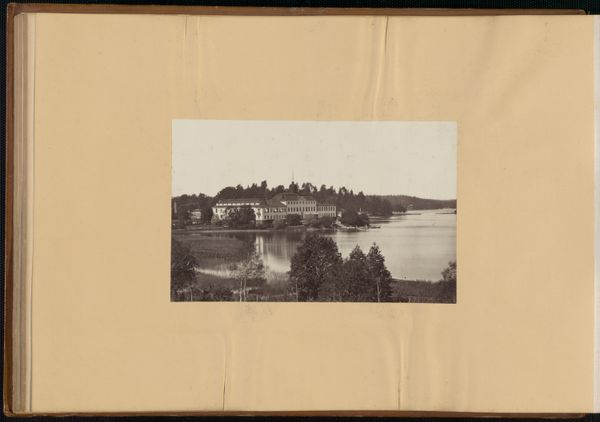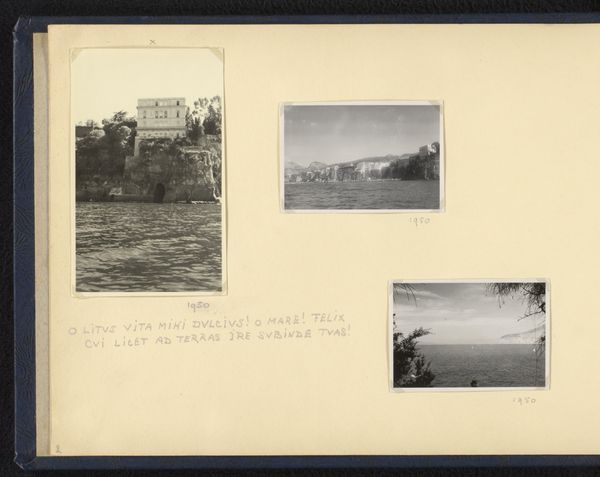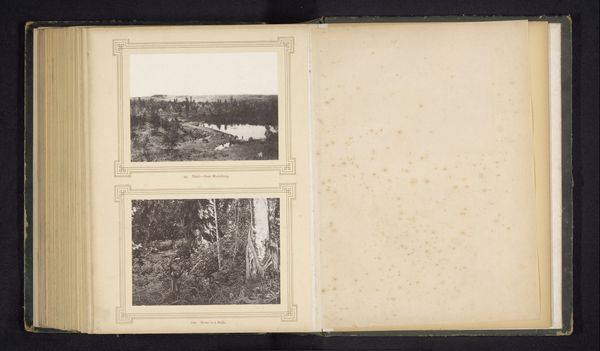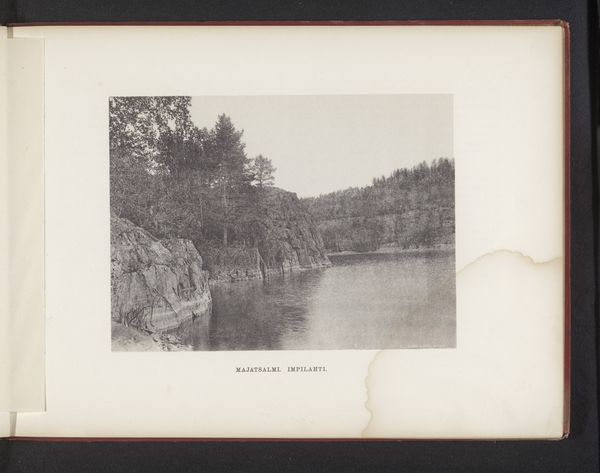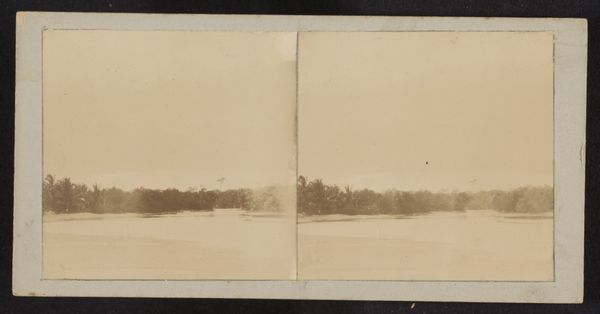
print, photography
# print
#
sculpture
#
landscape
#
photography
#
framed image
#
cityscape
#
modernism
Dimensions: height 122 mm, width 172 mm, height 350 mm, width 220 mm
Copyright: Rijks Museum: Open Domain
Curator: These two photographs, entitled "Fabriek en schip" – "Factory and Ship" – and created circa 1929-1930, present us with a fascinating industrial scene. Editor: My immediate reaction is one of subdued industrial grit. The monochromatic palette and grainy texture evoke a somber mood. The composition, dividing the image into two separate photographs, leads my eye back and forth. Curator: Yes, there’s a clear emphasis on the industrialized landscape. Look closely—the top image captures the factory itself, dominating the horizon line with its sprawling structures and smokestacks, while the bottom image is all about the means of transportation: the ship docked on the river, seemingly essential to the factory’s operation. The images point to the system of industrial labor. Editor: Agreed. The dark tones create a heavy atmosphere that reflects the nature of industry, I feel the artist wanted us to understand that link in more depth. The photographs draw our attention not just to their subjects but their interaction. Curator: It invites consideration of the raw materials flowing in and the finished goods flowing out. The factory requires these imports to convert natural assets into items that impact a larger environment, which we ultimately will consume as well. The photographer is compelling us to look beyond these two separate photographs but also how things work together. Editor: Indeed, a deeper viewing pushes us to examine each detail. Each line, massing, or shape invites introspection on what such things meant almost 100 years ago. Curator: The lack of human presence, too, feels deliberate. It reinforces the idea that the factory and the ship function almost as autonomous entities within a large system. I can just envision people at the time both relying on but being powerless against the system the factory represented. Editor: It certainly prompts reflections on industry's structural effects—but it is good for people to keep looking for meaning within it even after so long. Curator: An accurate assessment, in my opinion. Viewing those photographs helps ground our view that there is beauty to discover from any material object, whatever meaning it may take through human existence. Editor: An elegant summary. There's no right or wrong opinion, ultimately. These photographs show industry but can invite us to consider far more depending on each unique point of view.
Comments
No comments
Be the first to comment and join the conversation on the ultimate creative platform.
